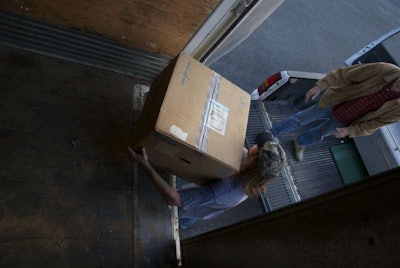
“It really comes down to changing behavior,” says Anthony Canale, VP of CargoNet, a cargo-optimized theft recovery service.. A fleet’s anti-theft strategy and related education must be implemented across the board and include drivers, technicians, warehouse personnel and office employees – “everyone,” he says.
But many fleets somehow neglect taking the time and effort to impart an obvious sense of responsibility to the driver. “Make sure that driver feels that he or she is an integral part of the supply chain,” Canale says.
Prime Inc.’s Bill Boehning, corporate director for security, says his fleet emphasizes that drivers must take ownership of the tractor and trailer and follow standard practices every time they stop. “Things like using their air cuff lock when they’re parking and checking the seals every time they get out – just easy common practices that so many companies take for granted,” Boehning says.
Where drivers park and how they behave in truckstops can have a huge impact when combating cargo theft, experts say. Carl Tapp – a retired maintenance director for P.A.M. Transportation who now runs Solutions Advocates, teaches drivers to use their surroundings to their advantage by backing trailers up against buildings, fences or even other trailers to make it hard or impossible for thieves to open doors and get inside.
Spec’ing vehicles to prevent cargo theft
Park in well-lit heavily traveled areas near fuel islands, buildings and restaurants whenever possible, and also take note of security cameras and park in their field of view, Tapp says. Long-term parking at rest stops and on highway shoulders generally is a bad idea – as is taking a load home and leaving it unattended for a weekend.
Another practice is instructing drivers to not talk about their loads. “Loose lips sink ships,” says Tapp, who believes the less drivers say about the loads they’re hauling and where they’re taking them, the better – and that includes everything from traditional CB radio conversations to today’s social media outlets: If a driver has been targeted, it’s a good bet thieves will check Facebook and Twitter to see if they can get any intelligence as to his or her upcoming stops and final destination.
When being followed
As targeting and tailing drivers have become more common practices over the past several years, it’s crucial they maintain situational awareness at all times – whether the truck is moving or not, Tapp says. If a driver suspects they’re being followed, have them change speeds and slow down to see if the vehicle passes them. If that doesn’t work, take the next exit and see if the suspicious vehicle does likewise.
If a driver is confident he’s being tailed, contacting the home office should be their first priority for help; finding a safe, secure location to park is another good idea. All Prime drivers go through a security course prior to hitting the road, and if they feel threatened, they contact the fleet security office for immediate assistance.
“We’ve had drivers running high-value freight who’ve I.D.’d a tail following them,” Boehning says. “They’re taught to change speeds and try to get that car to pass them and get the license plates if possible. You can’t call the police when this happens because following someone is not a crime, but they can call us.” Prime’s security team immediately starts monitoring the driver’s movement, talking to them and coaching them through the situation.
“The main thing is to offer them help and reassurance,” he says. “The drivers are out there alone, but we don’t want them to feel like they can’t pick up the phone and call us for help.” Boehning says Prime has seen good results simply because drivers have been aware of their surroundings “and we’ve been able to talk them through some tricky situations.”
To aid law enforcement in the event of outright truck or trailer theft, drivers should carry a description of their vehicle information, including VIN, all license plate numbers, pertinent insurance information and the make, model and color of the vehicles.
Above all else, drivers should be vigilant, experts say: Studies show that if a theft is reported within two hours, the odds of property recovery are better than 50-50 – but the recovery rate for thefts reported after four hours falls to 25 percent.












